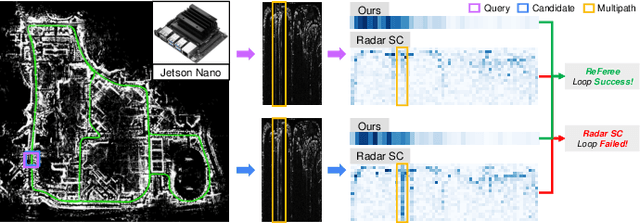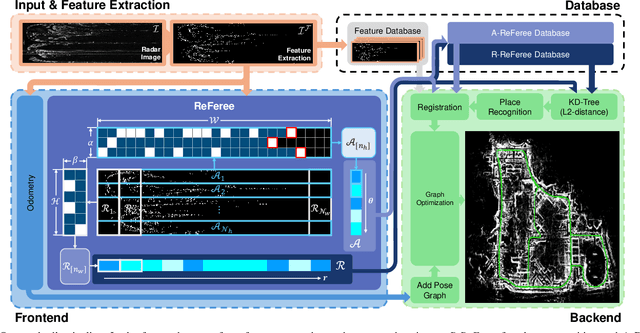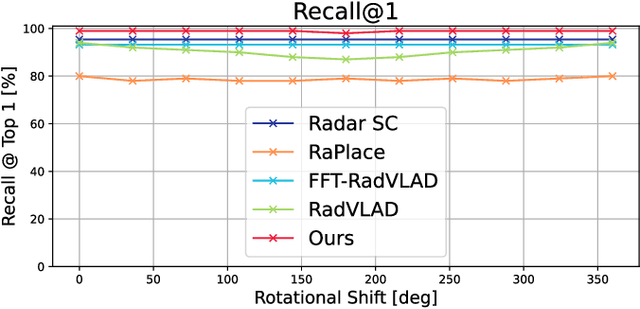Euncheol Choi
ReFeree: Radar-Based Lightweight and Robust Localization using Feature and Free space
Oct 02, 2024



Abstract:Place recognition plays an important role in achieving robust long-term autonomy. Real-world robots face a wide range of weather conditions (e.g. overcast, heavy rain, and snowing) and most sensors (i.e. camera, LiDAR) essentially functioning within or near-visible electromagnetic waves are sensitive to adverse weather conditions, making reliable localization difficult. In contrast, radar is gaining traction due to long electromagnetic waves, which are less affected by environmental changes and weather independence. In this work, we propose a radar-based lightweight and robust place recognition. We achieve rotational invariance and lightweight by selecting a one-dimensional ring-shaped description and robustness by mitigating the impact of false detection utilizing opposite noise characteristics between free space and feature. In addition, the initial heading can be estimated, which can assist in building a SLAM pipeline that combines odometry and registration, which takes into account onboard computing. The proposed method was tested for rigorous validation across various scenarios (i.e. single session, multi-session, and different weather conditions). In particular, we validate our descriptor achieving reliable place recognition performance through the results of extreme environments that lacked structural information such as an OORD dataset.
Salience-guided Ground Factor for Robust Localization of Delivery Robots in Complex Urban Environments
May 20, 2024Abstract:In urban environments for delivery robots, particularly in areas such as campuses and towns, many custom features defy standard road semantic categorizations. Addressing this challenge, our paper introduces a method leveraging Salient Object Detection (SOD) to extract these unique features, employing them as pivotal factors for enhanced robot loop closure and localization. Traditional geometric feature-based localization is hampered by fluctuating illumination and appearance changes. Our preference for SOD over semantic segmentation sidesteps the intricacies of classifying a myriad of non-standardized urban features. To achieve consistent ground features, the Motion Compensate IPM (MC-IPM) technique is implemented, capitalizing on motion for distortion compensation and subsequently selecting the most pertinent salient ground features through moment computations. For thorough evaluation, we validated the saliency detection and localization performances to the real urban scenarios. Project page: https://sites.google.com/view/salient-ground-feature/home.
 Add to Chrome
Add to Chrome Add to Firefox
Add to Firefox Add to Edge
Add to Edge